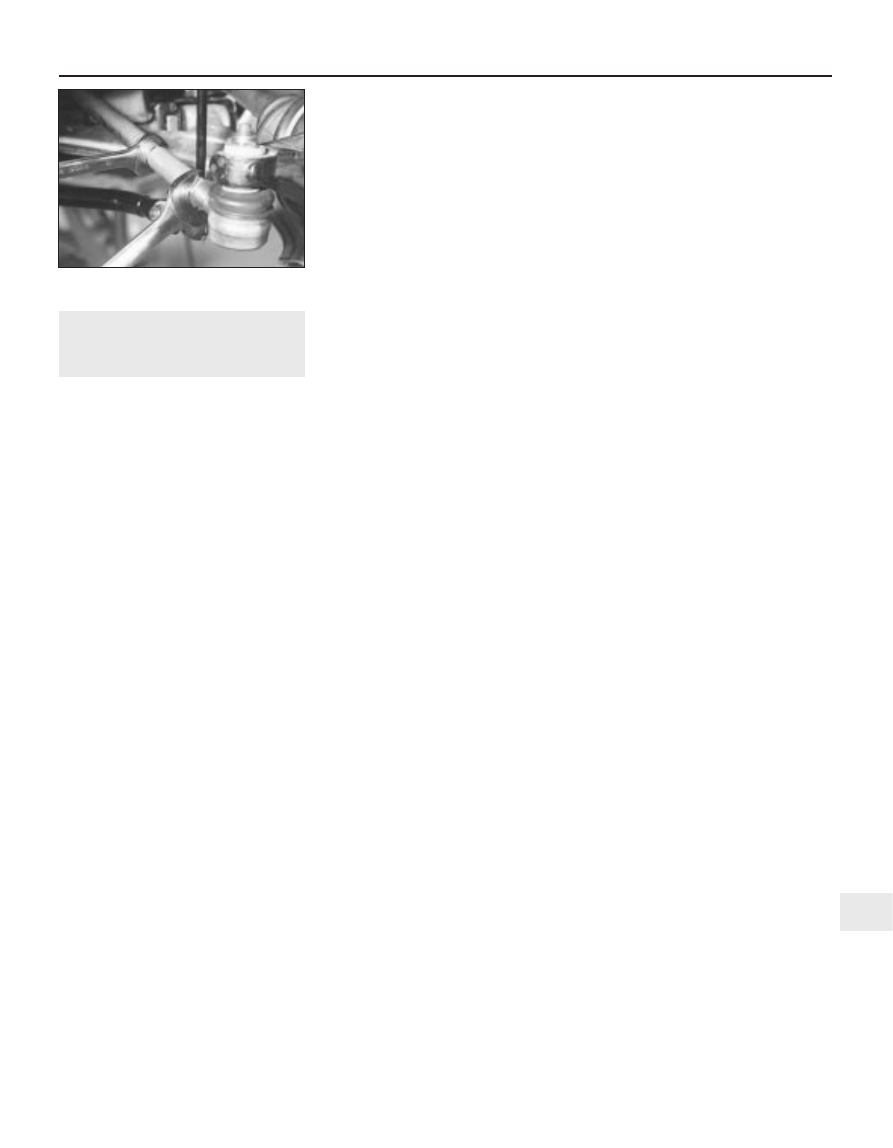содержание .. 38 39 40 41 ..
Peugeot 205. Manual - part 40

21 Wheel alignment and
steering angles - general
information
1 A car’s steering and suspension geometry
is defined in four basic settings - all angles are
expressed in degrees (toe settings are also
expressed as a measurement); the relevant
settings are camber, castor, steering axis
inclination, and toe-setting. With the
exception of front wheel toe-setting, none of
these settings are adjustable.
Front wheel toe setting -
checking and adjustment
2 Due to the special measuring equipment
necessary to accurately check the wheel
alignment, and the skill required to use it
properly, checking and adjustment is best left
to a Peugeot dealer or similar expert. Note
that most tyre-fitting shops now possess
sophisticated checking equipment. The
following is provided as a guide, should the
owner decide to carry out a DIY check.
3 The front wheel toe setting is checked by
measuring the distance between the front and
rear inside edges of the roadwheel rims.
Proprietary toe measurement gauges are
available from motor accessory shops.
Adjustment is made by screwing the track rod
ends in or out of their track rods, to alter the
effective length of the track rod assemblies.
4 For accurate checking, the vehicle must
be at the kerb weight, ie unladen and with a
full tank of fuel, and the ride height must be
correct (see Section 12).
5 Before starting work, check the tyre
pressures and tread wear, the condition of the
hub bearings, the steering wheel free play,
and the condition of the front suspension
components (see Chapter 1). Correct any
faults found.
6 Park the vehicle on level ground, check that
the front roadwheels are in the straight-ahead
position, then rock the rear and front ends to
settle the suspension. Release the handbrake,
and roll the vehicle backwards 1 metre, then
forwards again, to relieve any stresses in the
steering and suspension components.
7 Measure the distance between the front
edges of the wheel rims and the rear edges of
the rims. Subtract the rear measurement from
the front measurement, and check that the
result is within the specified range.
8 If adjustment is necessary, apply the
handbrake, then jack up the front of the
vehicle and support it securely on axle stands
(see “Jacking and vehicle support”). Turn the
steering wheel onto full-left lock, and record
the number of exposed threads on the right-
hand track rod end. Now turn the steering
onto full-right lock, and record the number of
threads on the left-hand side. If there are the
same number of threads visible on both sides,
then subsequent adjustment should be made
equally on both sides. If there are more
threads visible on one side than the other, it
will be necessary to compensate for this
during adjustment. Note: It is most important
that after adjustment, the same number of
threads are visible on each track rod end.
9 First clean the track rod end threads; if they
are corroded, apply penetrating fluid before
starting adjustment. Release the rubber
bellows outboard clips (where necessary), and
peel back the bellows; apply a smear of
grease to the inside of the bellows, so that
both are free, and will not be twisted or
strained as their respective track rods are
rotated.
10 Use a straight-edge and a scriber or
similar to mark the relationship of each track
rod to its track rod end then, holding each
track rod in turn, unscrew its locknut fully.
11 Alter the length of the track rods, bearing
in mind the note made in paragraph 8. Screw
them into or out of the track rod ends, rotating
the track rod using an open-ended spanner
fitted to the flats provided on the track rod.
Shortening the track rods (screwing them into
their track rod ends) will reduce toe-
in/increase toe-out (see illustration).
12 When the setting is correct, hold the track
rods and securely tighten the track rod end
locknuts. Count the exposed threads to check
the length of both track rods. If they are not
the same, then the adjustment has not been
made equally, and problems will be
encountered with tyre scrubbing in turns;
also, the steering wheel spokes will no longer
be horizontal when the wheels are in the
straight-ahead position.
13 If the track rod lengths are the same,
lower the vehicle to the ground and re-check
the toe setting; re-adjust if necessary. When
the setting is correct, securely tighten the
track rod end locknuts. Ensure that the rubber
bellows are seated correctly, and are not
twisted or strained, and secure them in
position with new retaining clips (where
necessary).
Suspension and steering 10•11
10
21.11 Adjusting the front wheel toe setting